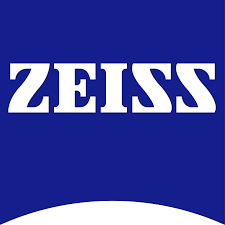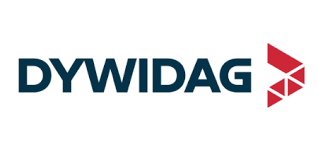Smart Mirror Market Report
Published Date: 15 December 2025 | Report Code: smart-mirror
Smart Mirror Market Size, Share, Industry Trends and Forecast to 2033
This report provides a comprehensive analysis of the Smart Mirror market from 2023 to 2033, including insights on size, trends, innovations, and regional performance, along with forecasts to understand future growth dynamics.
| Metric | Value |
|---|---|
| Study Period | 2023 - 2033 |
| 2023 Market Size | $1.30 Billion |
| CAGR (2023-2033) | 7.0% |
| 2033 Market Size | $2.61 Billion |
| Top Companies | Seura, Wall-Mounted Technology, MirrorVue, Philips |
| Last Modified Date | 15 December 2025 |
Smart Mirror Market Report (2023 - 2033)
Smart Mirror Market Overview
Customize Smart Mirror Market Report market research report
- ✔ Get in-depth analysis of Smart Mirror market size, growth, and forecasts.
- ✔ Understand Smart Mirror's regional dynamics and industry-specific trends.
- ✔ Identify potential applications, end-user demand, and growth segments in Smart Mirror
What is the Market Size & CAGR of Smart Mirror market in 2023?
Smart Mirror Industry Analysis
Smart Mirror Market Segmentation and Scope
Tell us your focus area and get a customized research report.
Smart Mirror Market Analysis Report by Region
Europe Smart Mirror Market Report:
Europe’s Smart Mirror market is on track to double in size from $0.35 billion in 2023 to $0.70 billion by 2033. The region’s focus on sustainability and advanced technology adoption provides a conducive environment for Smart Mirror innovation.Asia Pacific Smart Mirror Market Report:
The Asia Pacific region is experiencing significant growth in the Smart Mirror market, expected to expand from $0.27 billion in 2023 to $0.54 billion by 2033. Increased urbanization and a growing middle-class population drive demand, particularly in smart homes and commercial enterprises.North America Smart Mirror Market Report:
In North America, the market size will rise from $0.46 billion in 2023 to $0.92 billion by 2033. The strong presence of technology companies and increased adoption of smart home devices significantly contribute to this growth.South America Smart Mirror Market Report:
South America’s Smart Mirror market is projected to grow from $0.11 billion in 2023 to $0.22 billion by 2033. Limited but growing awareness of smart technologies and improvements in disposable income will enhance market prospects over the coming years.Middle East & Africa Smart Mirror Market Report:
The Middle East and Africa's market is projected to grow from $0.12 billion in 2023 to $0.23 billion by 2033, driven by increasing investments in smart city projects and a gradual shift in consumer behavior towards smart home solutions.Tell us your focus area and get a customized research report.
Smart Mirror Market Analysis By End User
Global Smart Mirror Market, By End-User Market Analysis (2023 - 2033)
The market segmentation indicates that the residential sector commands a significant share, representing an estimated 68.56% of the market in 2023 with expectations to maintain this percentage through 2033. Commercial and healthcare applications, accounting for 23.87% and 7.57% respectively, are expected to grow as businesses and healthcare facilities adopt smart solutions for enhanced efficiency and customer interaction.
Smart Mirror Market Analysis By Product Type
Global Smart Mirror Market, By Product Type Market Analysis (2023 - 2033)
The product types include Standard Smart Mirrors, Fitness Smart Mirrors, and Commercial Smart Mirrors. Standard Smart Mirrors dominate this sector with a 68.56% market share, whereas Fitness Smart Mirrors hold 23.87% due to the rising trend of fitness among consumers. Commercial Smart Mirrors, while currently at 7.57%, are anticipated to gain traction as businesses recognize their potential.
Smart Mirror Market Analysis By Technology
Global Smart Mirror Market, By Technology Market Analysis (2023 - 2033)
From a technological standpoint, Voice Control capabilities lead the market with a 68.56% share, crucial in enhancing user accessibility. Touch Screen options follow at 23.87%, while AI Integration represents a smaller segment at 7.57%, showcasing growth potential as AI technology advances.
Smart Mirror Market Analysis By Features
Global Smart Mirror Market, By Features Market Analysis (2023 - 2033)
Key features driving market growth include integrated voice control systems, health tracking features, and connectivity with other smart devices. The versatility in features continues to attract consumers, presenting unique selling propositions for manufacturers.
Smart Mirror Market Analysis By Distribution Channel
Global Smart Mirror Market, By Distribution Channel Market Analysis (2023 - 2033)
Online sales channels currently dominate distribution with an impressive 85.9% share, predominantly due to increased e-commerce activity. Offline sales, though smaller at 14.1%, present significant opportunities for businesses focusing on traditional retail strategies.
Smart Mirror Market Trends and Future Forecast
Tell us your focus area and get a customized research report.
Global Market Leaders and Top Companies in Smart Mirror Industry
Seura:
Seura specializes in luxury smart mirrors that integrate seamlessly with design aesthetics, providing functionality while maintaining a sophisticated look.Wall-Mounted Technology:
This company focuses on integration of smart home tech with everyday life, enhancing user experience through innovation and ergonomic design.MirrorVue:
Known for its revolutionary products, MirrorVue provides IP-connected mirrors, catering to commercial applications in hospitality and retail.Philips:
A global leader in technology, Philips has delved into the smart mirror segment, focusing on health and wellness applications, including skincare analysis.We're grateful to work with incredible clients.









FAQs
What is the market size of smart Mirror?
The smart mirror market is valued at $1.3 billion in 2023 with a projected compound annual growth rate (CAGR) of 7.0%. By 2033, the market size is expected to grow significantly, reaching even larger valuations.
What are the key market players or companies in the smart Mirror industry?
Key players in the smart mirror industry include major technology and electronics companies that focus on innovation in home automation, healthcare solutions, and retail technologies. Their contributions are essential in driving market growth and integrating advanced features.
What are the primary factors driving the growth in the smart Mirror industry?
The growth of the smart mirror industry is driven by increasing consumer demand for smart home devices, advancements in display technologies, and the integration of artificial intelligence. These factors enhance functionality, promoting wider adoption across residential and commercial sectors.
Which region is the fastest Growing in the smart Mirror market?
The fastest-growing region in the smart mirror market is North America, with projected growth from $0.46 billion in 2023 to $0.92 billion by 2033. Other growing regions include Europe and Asia Pacific, highlighting global demand.
Does ConsaInsights provide customized market report data for the smart mirror industry?
Yes, ConsaInsights offers customized market report data tailored to specific needs within the smart mirror industry. This includes detailed insights and analytics that cater to varied business objectives and market strategies.
What deliverables can I expect from this smart mirror market research project?
Expect comprehensive deliverables such as detailed market analysis, segmentation reports, trend forecasts, and competitive landscape overviews. These insights will guide strategic decision-making in the smart mirror industry.
What are the market trends of smart mirrors?
Trends in the smart mirror market include rising consumer preference for voice-controlled interfaces, the adoption of OLED technology, and increased integration with health and wellness applications. These developments shape future designs and functionalities.
